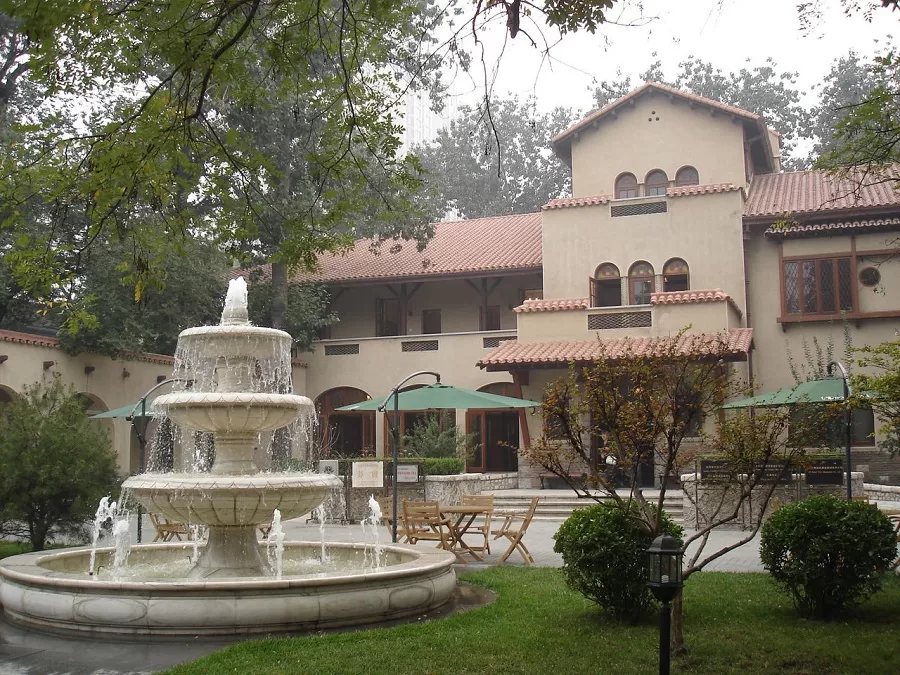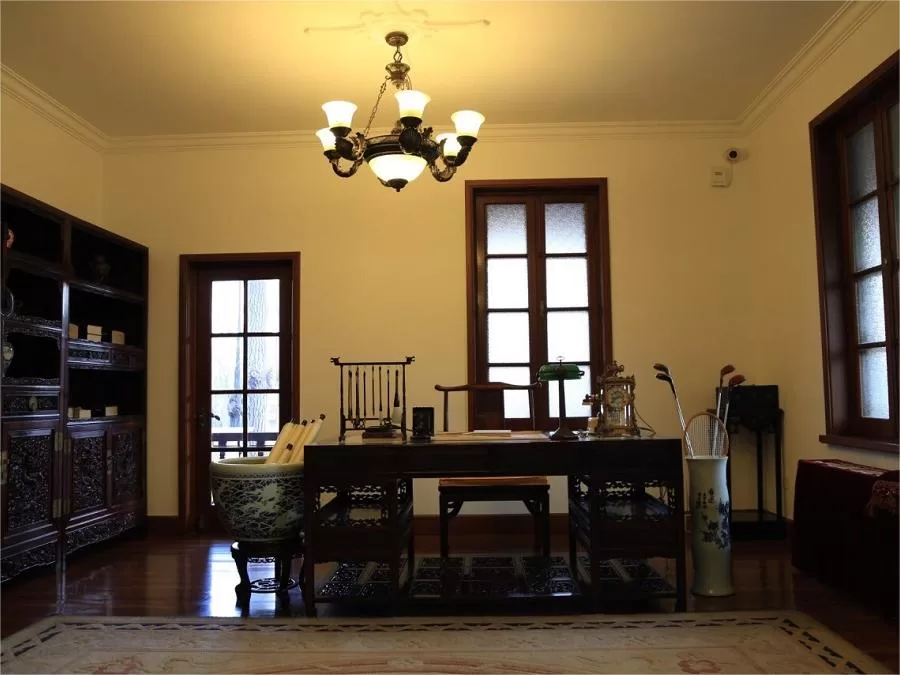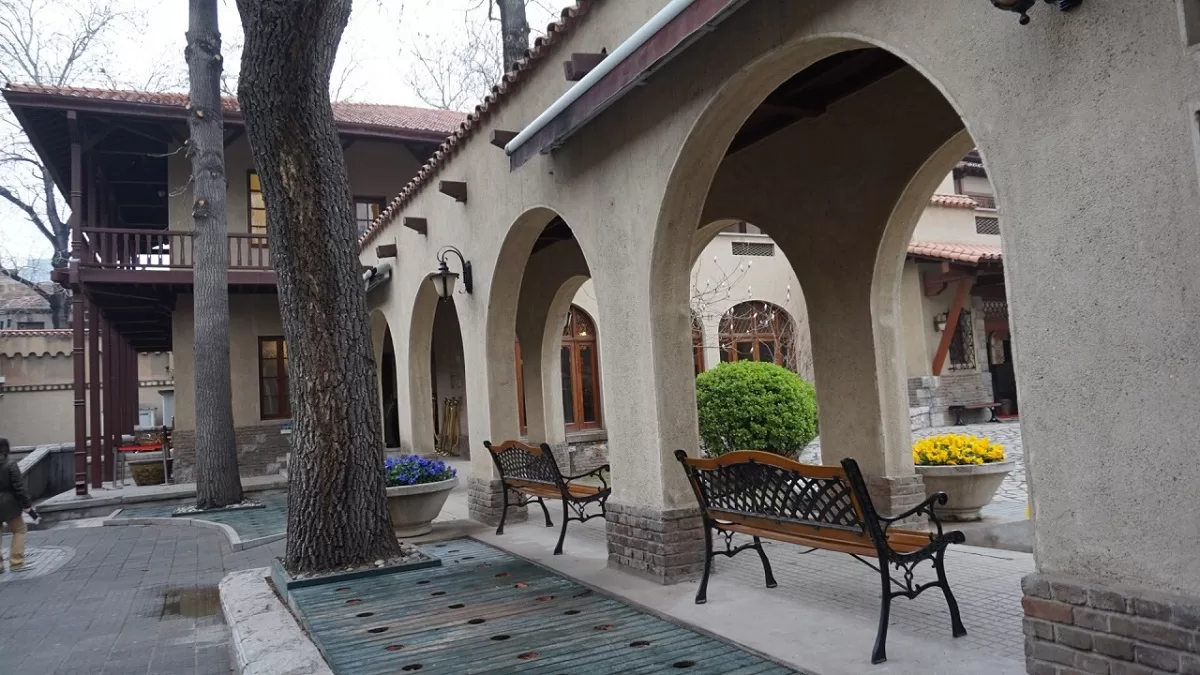Jingyuan Garden (静园, Jing Garden) was established in 1921. Encompassing an area of approximately 3,016 square meters, with a building space of around 1,900 square meters, it holds immense historical significance as a protected architectural site and a cultural heritage preservation unit in Tianjin.
Originally named “Qianguan,” Jingyuan Garden served as the residence of Lu Zongyu, a diplomat from the Beiyang Government stationed in Japan. From July 1929 to November 1931, it became the dwelling place of the last emperor, Puyi, along with Empress Wanrong and Consorts Wenxiu. During this period, the garden underwent a name change to “Jingyuan,” symbolizing the cultivation of a serene and majestic ambiance.
Nestled within the garden is a brick and wood structure that seamlessly blends Spanish and Japanese architectural styles. Its surroundings are adorned with abundant foliage, fostering a tranquil and delightful atmosphere. Jingyuan Garden exemplifies the distinctive courtyard-style private residences prevalent during the Tianjin Concession era.
Table of Contents
- Basic Information
- Location and Transportation
- Highlights of Jingyuan Garden
- Vlog about Jingyuan Garden
- Useful Tips Summarized from Reviews
Basic Information
| Estimated Length of Tour | 1 – 2 hours |
| Ticket Price | 20 RMB |
| Opening Hours | 9.00 – 17.30; Last admission: 17.00 Closed on Monday |
| Telephone Number | 0086-022-27311618 |
Location and Transportation
Jingyuan Garden is situated at No. 70 Anshan Road, Heping District, Tianjin, China. The garden’s location places it within the bustling Heping District of Tianjin, a vibrant city known for its rich history and cultural heritage. To get there, you can choose the following ways:
Bus: Take tourist line 5 and get off at Jingyuan Garden Stop. Or you can also take bus No. 8, get off at Anshan Road Gansu Road, and walk about 150 meters to the north to reach the garden.
Metro: The nearest metro station to Jingyuan Garden is Anshan Road (鞍山道) on line 1. After getting out of the station from Exit A, walk about 300 meters to the north to reach the garden.
Highlights of Jingyuan Garden
Architectural Marvels

Jingyuan Garden showcases remarkable architectural marvels that leave visitors in awe. The Grand Hall of Jingyuan stands as a testament to exquisite craftsmanship, adorned with intricate wood carvings and vibrant murals depicting ancient Chinese legends. The blend of Spanish and Japanese architectural styles in the brick and wood structures creates a unique fusion of beauty. The garden’s pavilions and bridges offer breathtaking views of the surrounding landscape, while the rockeries and water features add a touch of natural splendor. Jingyuan Garden’s architectural wonders transport visitors to a world of elegance and cultural richness.
Serene Garden Landscape

Jingyuan Garden mesmerizes visitors with its serene and picturesque landscape. The harmonious blend of pavilions, halls, rockeries, ponds, and lush greenery creates a tranquil oasis. Strolling along the meticulously designed pathways, visitors are treated to breathtaking views at every turn. The soothing sounds of trickling water and the gentle rustle of leaves enhance the peaceful ambiance. Each element of the garden is thoughtfully arranged to create a balance between nature and human design. Jingyuan Garden’s serene garden landscape invites visitors to escape the bustling city and find solace in the beauty and serenity of its surroundings.
Puyi Exhibition

Jingyuan Garden proudly presents the Puyi Exhibition, offering visitors a fascinating glimpse into the life and legacy of the last emperor of China. The exhibition showcases a collection of artifacts, photographs, and historical documents that shed light on Puyi’s reign and his time spent residing in the garden. Visitors can explore the exhibits and learn about Puyi’s role in Chinese history, his imperial lifestyle, and his interactions with the influential figures of his era. Through this immersive experience, the Puyi Exhibition at Jingyuan Garden provides a deeper understanding of the captivating story of China’s last emperor.
Vlog about Jingyuan Garden
Useful Tips Summarized from Reviews
Renovated Interior with Photogenic Facilities: The interior has undergone renovations, and the objects and facilities are aesthetically pleasing for photography. While some original items are preserved, it doesn’t resemble a typical museum since the place used to be inhabited by residents.
Transportation Suggestions: It is recommended to either take a taxi or walk to Panshan Mountain, as nearby parking spaces are limited, and some may be expensive.
Main Building Layout: The first floor of the main building primarily houses a large dining hall, small dining areas, meeting rooms, reception rooms, and a bedroom with cultural artifacts. The second floor includes a memorial hall, Puyi and Wanrong’s study, and bedrooms.


